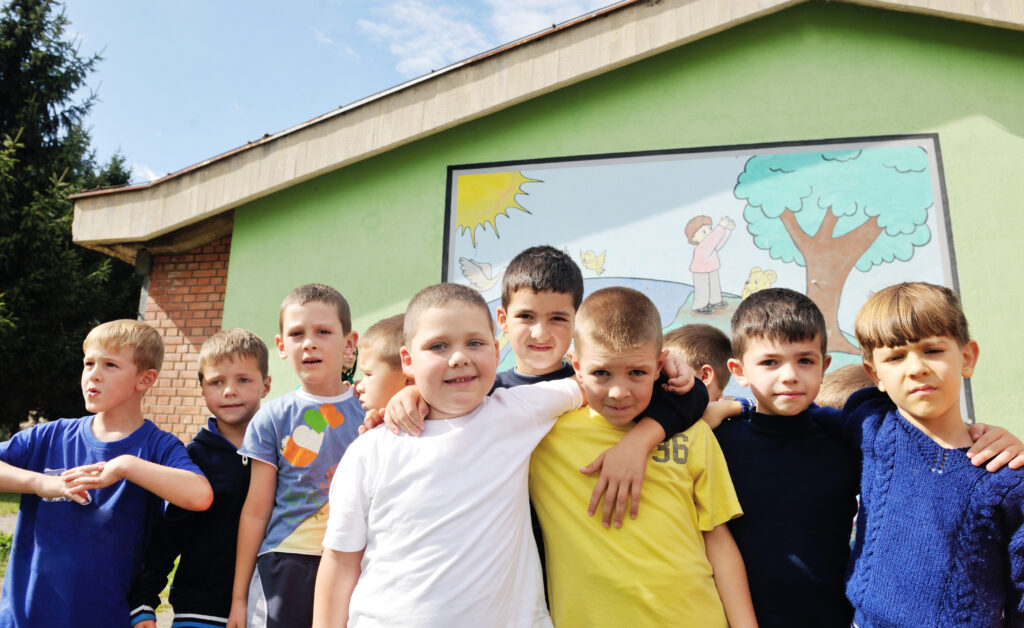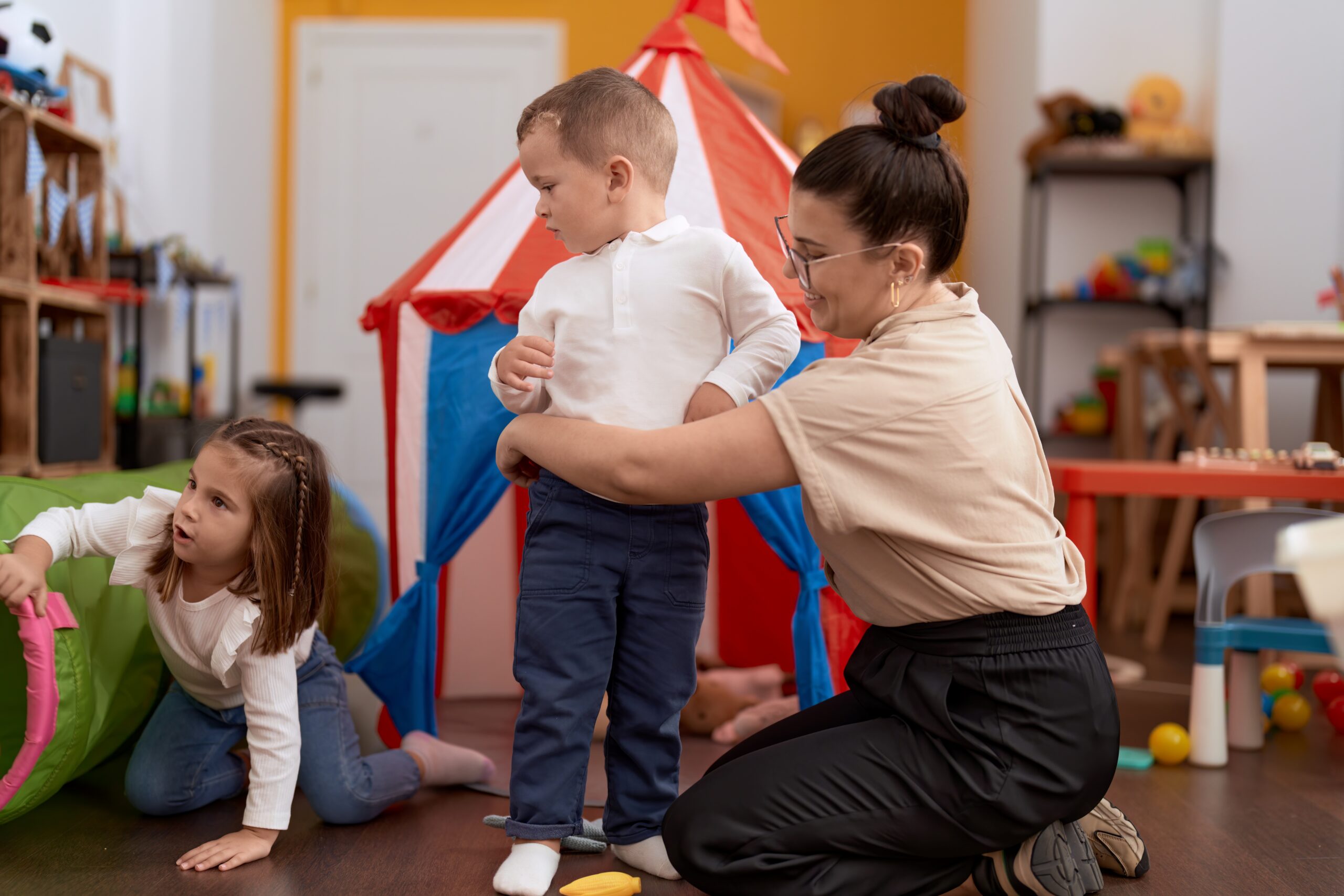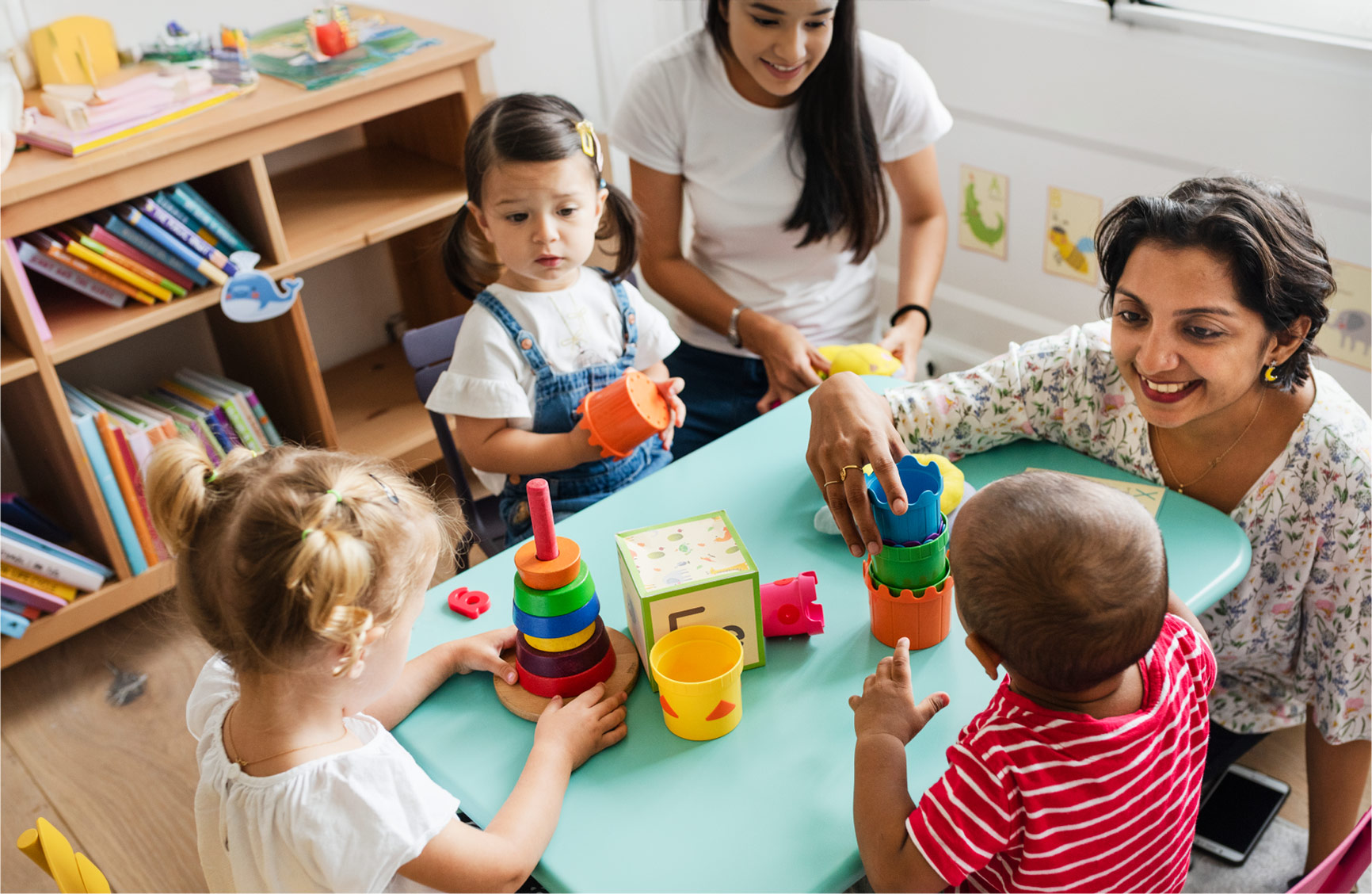Achieve a work-life balance with these strategies for preventing teacher burnout in early childhood education
Being an early childhood educator is a rewarding and fulfilling profession, but it can also be demanding and stressful. The responsibility of nurturing young minds while juggling administrative work and other daily tasks at your centre can sometimes lead to burnout. Stress management and prioritising self-care aren’t the easiest things to do.
Are you struggling with time management, burnout and feeling overwhelmed with work as an educator? These 6 strategies for preventing teacher burnout in early childhood education will guide you through practical techniques to achieve a work-life balance and alleviate stress.
1. Practice mindfulness
Mindfulness is an effective technique that can significantly assist in managing stress and fostering emotional wellbeing. By dedicating just a few minutes every day to mindfulness practices, such as focusing on your breath, observing your thoughts and sensations or staying fully present in the current moment, you can experience a range of benefits.
One of the key advantages of engaging in mindfulness exercises is stress reduction. By intentionally directing our attention to the present moment, we can detach ourselves from the worries and anxieties that often plague our minds. This allows us to cultivate a sense of calm and relaxation, even in the midst of a hectic and demanding work schedule.

It’s crucial to remember that while mindfulness practices, such as meditation and deep breathing exercises, are effective tools for managing stress, it’s essential to integrate them into your daily routine consistently. Set aside dedicated time each day for mindfulness practice, whether it’s in the morning before work, during lunch breaks or in the evening before bed. Consistency is key to experiencing the full benefits of mindfulness, so make it a habit to prioritise these practices regularly.
2. Establish boundaries
Setting clear boundaries between work and personal life is crucial for maintaining a healthy work-life balance. It is easy for work to spill over into personal time, leading to increased stress and a diminished quality of life. By establishing and adhering to boundaries, you can effectively manage your time and energy, creating the space to do activities you enjoy and take care of your wellbeing.
An effective strategy is to avoid taking work home whenever possible. Bringing work into your personal space can blur the lines between work and personal life. This leaves little time for relaxation, hobbies or spending quality time with loved ones. By leaving work at work or finding ways to mentally disconnect from work when you’re at home, you can give yourself the opportunity to recharge and rejuvenate.
In addition to setting boundaries between work and personal life, it’s crucial to establish boundaries within the workplace as well. Clearly communicate your availability and limitations to colleagues and supervisors to prevent work-related stress from encroaching on your personal time. Practice saying “no” to additional tasks or responsibilities that exceed your capacity, and don’t hesitate to delegate tasks when necessary. By maintaining firm boundaries, you can protect your time and energy, a good strategy for avoiding burnout.

3. Engage in physical activity
Regular exercise is known to be an exceptional stress reliever and mood enhancer. You can practice effective stress management and uplift your spirits by incorporating physical activities that you enjoy, such as walking, jogging, yoga or dancing, into your daily routine. Engaging in regular physical activity not only helps you cope with stress but also increases your energy levels—it promotes overall wellbeing.
When it comes to finding physical activities that you enjoy, your options are endless. Walking is a simple and accessible form of exercise that can be done anytime, anywhere. Whether you choose to take a leisurely stroll around your neighbourhood or prefer a brisk walk in a nearby park, it can be an excellent way to clear your mind and reduce stress. Find a physical activity you enjoy, and then make the time to do it.
Beyond physical exercise, engaging in meaningful activities that bring you joy and fulfilment can significantly contribute to your overall wellbeing. Whether it’s volunteering, pursuing creative hobbies or spending quality time with loved ones, make time for activities that nourish your soul and rejuvenate your spirit. Connecting with your passions and interests outside of work can provide a valuable sense of balance and perspective, helping you recharge and refocus.
4. Seek support
Support is an essential component of personal and professional growth. As an educator, it is crucial to have a support system in place to navigate the challenges and hurdles that come with your job. When facing difficulties, don’t hesitate to reach out for support.

One way to find support is by connecting with fellow educators. Collaborating with colleagues provides an opportunity to share experiences, exchange ideas and gain insights. Engaging in conversations with other educators allows for the exploration of different perspectives and approaches to common issues. This can lead to a deeper understanding of the challenges faced in the workplace and the development of effective strategies to overcome them.
Joining professional networks is another valuable way to establish a support system. These networks consist of like-minded professionals who are dedicated to advancing their careers and fostering a community of learning and collaboration. Lastly, professional networks offer a supportive environment where you can seek advice, guidance and feedback.
5. Practice self-care
Prioritising self-care is essential for nurturing your physical, mental and emotional wellbeing. It allows you to recharge, so you can effectively care for children. Taking the time to engage in activities that bring you joy and relaxation is not selfish but necessary.
One way to practice self-care is by incorporating activities that help you unwind and relax. Engaging in hobbies is a great way to nurture your wellbeing. Hobbies allow you to immerse yourself in activities you enjoy, providing a sense of fulfilment and accomplishment. Whether it’s painting, gardening, playing an instrument, reading or any other hobby that brings you joy, make time for it regularly. Dedicate a specific time each week to engaging in your hobbies and reap the benefits of self-care.
6. Improve your time management skills
Enhancing your time management skills can have a significant impact on reducing stress levels. By creating a schedule or to-do list, you can effectively prioritise tasks and allocate specific time slots for different activities. This approach allows you to manage your workload more efficiently, avoid procrastination and minimise the stress caused by last-minute rushes.

A key aspect of effective time management is the ability to prioritise tasks. By creating a to-do list, you can clearly identify what needs to be done and determine the order of importance. This helps you focus on the most crucial tasks so you can complete them in a timely manner. It also allows you to allocate appropriate time slots for each activity so you have enough time to complete them without feeling overwhelmed.
How to encourage the use of strategies for preventing teacher burnout in early childhood education
Self-care practices—Encourage educators to prioritise their wellbeing through regular self-care routines.
Supportive environment—Foster a culture of collaboration and appreciation to reduce stress and promote job satisfaction.
Professional development—Provide resources and training to help teachers develop coping strategies and manage workload effectively.
Additional strategies for preventing teacher burnout in early childhood education
You can also incorporate these practices and use them alongside the previously mentioned strategies for avoiding burnout in early childhood education.
Cultivate resilience—Building resilience is essential for coping with the inevitable challenges and setbacks you may encounter in your role as early childhood educators. Cultivate resilience by reframing negative experiences as opportunities for growth and learning. Practice self-reflection and self-awareness to identify your strengths and areas for improvement, and adopt a growth mindset that embraces challenge as part of the learning process. Surround yourself with positive influences and supportive relationships that uplift and inspire you, and draw on your inner resilience to navigate adversity with grace and determination.

Foster a supportive community—Creating a supportive community within your workplace can significantly enhance your resilience and wellbeing. Cultivate strong relationships with colleagues based on trust, respect and mutual support. Lean on your coworkers for encouragement and guidance during difficult times, and be willing to offer your support in return. Collaborate on projects and initiatives that promote teamwork and camaraderie, and celebrate each other’s successes and milestones. By fostering a sense of belonging and community within your workplace, you can create a supportive environment where everyone thrives.
Practice gratitude—Cultivating an attitude of gratitude can have profound effects on your mental health and emotional wellbeing. Take time each day to reflect on the things you’re grateful for, whether it’s the support of your colleagues, the enthusiasm of the children you care for or the beauty of nature. Keep a gratitude journal to record your blessings and moments of appreciation, and make it a habit to express gratitude to those around you. By focusing on the positive aspects of your life and work, you can shift your perspective and cultivate a greater sense of happiness and fulfilment.
Incorporate these strategies for preventing teacher burnout in early childhood education at your service
Preventing teacher burnout in early childhood education requires a multifaceted approach that addresses the physical, emotional and psychological aspects of wellbeing. By implementing these strategies consistently and prioritising self-care, educators can cultivate resilience, maintain a healthy work-life balance and thrive in their roles as nurturing and dedicated professionals. Remember that taking care of yourself is not selfish—it’s essential for providing the best possible care and support to the children and families you serve.
By incorporating these strategies for preventing teacher burnout in early childhood education into your daily routine, you can find a healthy work-life balance, reduce burnout and enhance your overall satisfaction with your career. Solutions that streamline work and simplify everyday tasks can also greatly benefit your work as an educator. Educator platforms, such as Playground, can empower you to accomplish more tasks with ease.
You might also be interested in…

Blog
Navigating the challenge—strategies for coping with the shortage of early childhood teachers
The latest Australian Children’s Education and Care Quality Authority (ACECQA) NQF Snapshot shows that the proportion of long day care services with ….
Read more

Blog
Early childhood education and care is not babysitting — and never will be
Educators across Australia have certainly enjoyed a period of more elevated recognition in recent months and years, but the true ….
Read more

Blog
Australian ECEC providers struggle with childcare staff shortages
Our Early Childhood Education and Care (ECEC) sector in Australia is struggling with high turnover of childcare staff. By law, long ….
Read more

by Dean Comeau (Marketing Team Lead)
-
First published: 17 July 2023
Written by: Dean Comeau
